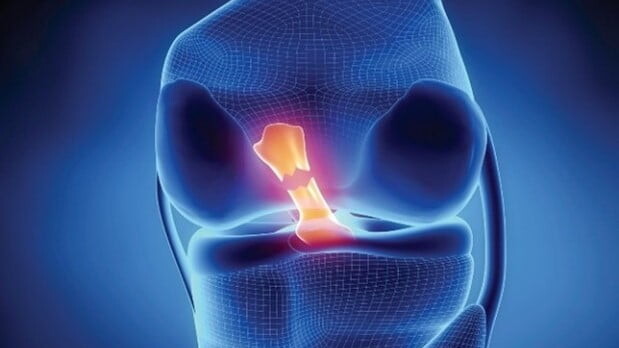
“You’ve done your ACL” – four simple words that are devastating, and it seems everyone who plays sport knows that the ACL is a pretty important structure, and that the “you’ve done your ACL” wording also correlates to “you’ll miss the next 12 months”.
In our physiotherapy (and medical) worlds, things are changing all the time – new evidence and research means we are constantly getting better at understanding injuries and how to best manage them.
And in the physio world, our thoughts around ACL’s have taken an enormous turn for the better, not only regarding the surgery itself, but also the rehabilitation needed to ensure we get players back as safely as we can. But first, let’s look at a few of the scary statistics we have known about ACL’s for a long time:
- It is a devastating diagnosis – in the past (but this changing) a diagnosis of ACL rupture has meant almost certain ACL Reconstruction (ACLR) surgery, and that surgery needs approximately a 12 month rehabilitation period.
- Females are at least two times, and up to 10 times, more likely than males to rupture their ACL.
- Only 1/3 of sportspeople who have an ACLR return to their preinjury playing level
- 20% of people who have an ACLR will re rupture their graft (and there is also a greater risk of “doing an ACL” on their good knee).
- Around 50% of people who have an ACLR will go on to have some knee arthritis.
These statistics are not great reading, but the great thing about statistics is that they reflect the PAST, and we are pretty positive with the way we manage ACL’s these days, that those stat’s are going to get a lot more positive.
Firstly, what is the ACL? The ACL (Anterior Cruciate Ligament) is one of the main stabilising ligaments sitting deep within the knee joint. It has several functions, the main ones being to help control rotation of the knee, to limit hyper extension (over straightening) of the knee, and also to basically stop our femur (thigh bone) from slipping forwards and off our tibia (shin bone) when running, jumping/landing, and changing direction. Therefore the sports with lots of direction change, speed, and landing forces – AFL and netball to name two – have high incidences of ACL injuries.
So What Has Changed With Our Knowledge of ACL’s?
- Up to 80% of ACL injuries are actually non-contact injuries and simply involve the athlete landing at speed whilst instantaneously pivoting or changing body direction. We used to think most ACL ruptures were caused by hard contact, and pretty much unavoidable, but the fact we know most ruptures are caused without any interference from another player means that we can really work hard on training athletes to prevent this injury – by giving training drills that help develop strength, hopping and landing ability, muscle control, and pivoting.
- We MUST get all coaches/parents to start delivering ACL Injury Prevention Programs (basic 15 minute warm up drills) before every training session and game. The incidence of ACL rupture in post puberty females is 2-10 times greater than in same age males. The peak incidence of ACL injuries in females is 14 – 18yo, whilst in males is 19- 25yo. We know that these Injury Prevention Programs work, we just need to get community footballers involved, especially girls.
- You don’t necessarily have to have an ACL reconstruction. We’ve seen that only about a third of people who have an ACLR return to preinjury sport levels, but what about those that don’t? Our thoughts have been turned on their head, and whilst there is certainly a need for certain athletes to go on and have a reconstruction, there is some good evidence mounting that some athletes (with the right rehabilitation program, a great mindset to work hard, and the preparedness to take a controlled risk) might actually be able to return to sport without an ACL, without the surgery, and without the 12 month wait! I definitely still lean towards the benefits of an ACLR for many, but it’s got us thinking!
- An ACL Reconstruction is a 12 month injury! Or is it? Whilst traditionally thinking a player could not return to sport for 12 months, we now know that each individual person must be taken on his/her merits and continually assessed for readiness for return to sport. We have some great tests that tell us when an athlete is ready to run, or jump, or twist, or return to training, and these progressions are not based on timeframes – they are based on the person’s ability to pass the tests. Whilst 12 months is still the overall general aim, we know that the ACL graft doesn’t mature/strengthen for up to three years, so we like to take it a little slower in kids – maybe more like 18 months.
- We can reduce the recurrence rates of ACL ruptures. The recurrence rate of ACL ruptures (rupturing the reconstructed graft) can be as high as 20%. That’s a reasonably significant figure. And even in the AFL where the medical care, knowledge base and time spent on rehab is world class, the recurrence rate is between 10 – 15%. What is fascinating (not if it happens to you) is the statistic that tells us that if you suffer an ACL rupture in one knee, you are more chance of going on to rupture the ACL in your good knee. But our rehabilitation programs are so much better today than they were 10 years ago, even 5 years ago. We have great stages, with great tests, and very specific aims. We know that we must get athletes stronger than they’ve ever been, and hopping with great control, and landing well, and helping young skeletal systems get better at meeting the demands of intense sports.
So there you go – what seems to be some pretty sobering statistics surrounding what has traditionally been thought of as an extremely successful operation, has just led us to bigger and better things in the physio and rehabilitation world. There’s enormous upside for those seeking advice on ACL injuries: better knowledge from brilliant studies, improved surgical techniques, new rehabilitation protocols and procedures, understanding of time frames involved, and new preventative exercise programs that are showing results and statistics as exciting as the previous statistics were alarming!
I was lucky enough to sit with Sports Physio and ACL Guru Mick Hughes recently for a 2 part podcast on ACL’s and it was fascinating to get his insight on ACL’s, and there was plenty of chat about adolescents. If you want to have a listen, head across to our podcast site and download the latest episodes: https://performpreventrecover.podbean.com/
Anthony Lance

SSPC Physiotherapist
705 Centre Rd East Bentleigh
anthony@sspc.com.au
You might like these other resources
Why Do My Joints Ache In Cold Weather?
11 June 2025
The Role of Ice in Managing Acute Sporting Injuries
17 September 2024
Are Your Bones Strong Enough?
28 May 2024





